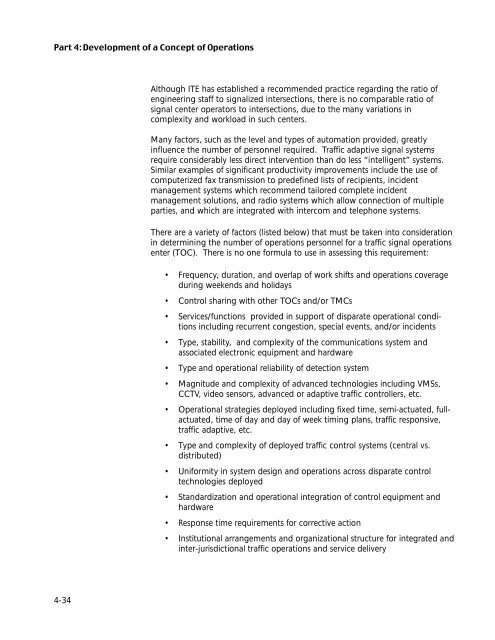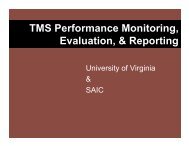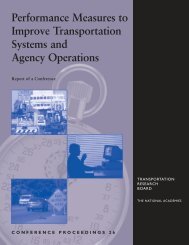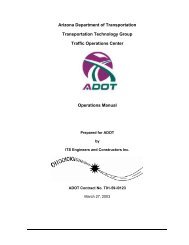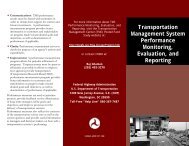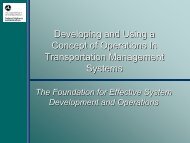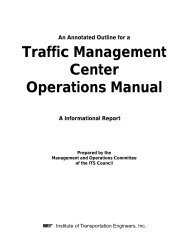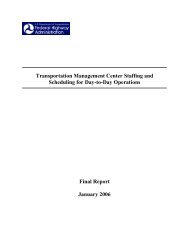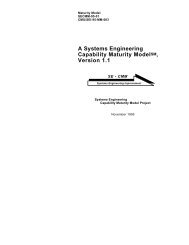Transportation Management Center Concepts of Operations
Transportation Management Center Concepts of Operations
Transportation Management Center Concepts of Operations
- No tags were found...
Create successful ePaper yourself
Turn your PDF publications into a flip-book with our unique Google optimized e-Paper software.
Although ITE has established a recommended practice regarding the ratio <strong>of</strong>engineering staff to signalized intersections, there is no comparable ratio <strong>of</strong>signal center operators to intersections, due to the many variations incomplexity and workload in such centers.Many factors, such as the level and types <strong>of</strong> automation provided, greatlyinfluence the number <strong>of</strong> personnel required. Traffic adaptive signal systemsrequire considerably less direct intervention than do less “intelligent” systems.Similar examples <strong>of</strong> significant productivity improvements include the use <strong>of</strong>computerized fax transmission to predefined lists <strong>of</strong> recipients, incidentmanagement systems which recommend tailored complete incidentmanagement solutions, and radio systems which allow connection <strong>of</strong> multipleparties, and which are integrated with intercom and telephone systems.There are a variety <strong>of</strong> factors (listed below) that must be taken into considerationin determining the number <strong>of</strong> operations personnel for a traffic signal operationsenter (TOC). There is no one formula to use in assessing this requirement:• Frequency, duration, and overlap <strong>of</strong> work shifts and operations coverageduring weekends and holidays• Control sharing with other TOCs and/or TMCs• Services/functions provided in support <strong>of</strong> disparate operational conditionsincluding recurrent congestion, special events, and/or incidents• Type, stability, and complexity <strong>of</strong> the communications system andassociated electronic equipment and hardware• Type and operational reliability <strong>of</strong> detection system• Magnitude and complexity <strong>of</strong> advanced technologies including VMSs,CCTV, video sensors, advanced or adaptive traffic controllers, etc.• Operational strategies deployed including fixed time, semi-actuated, fullactuated,time <strong>of</strong> day and day <strong>of</strong> week timing plans, traffic responsive,traffic adaptive, etc.• Type and complexity <strong>of</strong> deployed traffic control systems (central vs.distributed)• Uniformity in system design and operations across disparate controltechnologies deployed• Standardization and operational integration <strong>of</strong> control equipment andhardware• Response time requirements for corrective action• Institutional arrangements and organizational structure for integrated andinter-jurisdictional traffic operations and service delivery4-34


